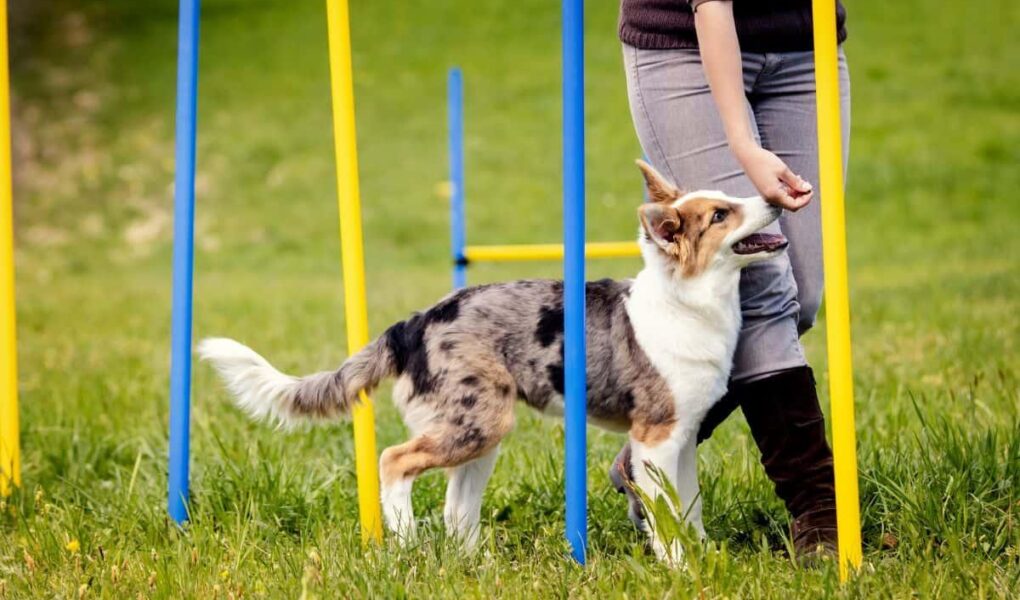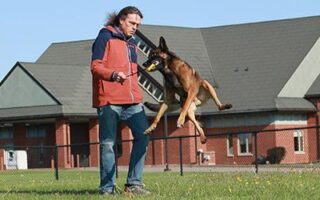Teaching your dog to sit is more than just a foundational command—it’s an invitation to a world of communication and connection between you and your furry friend. Whether you’re welcoming a spirited puppy into your home or guiding a more seasoned canine companion, mastering the ”sit” command lays the groundwork for a harmonious relationship built on trust and respect. In this article, we’ll explore effective techniques, share expert tips, and highlight the benefits of this essential command. Join us as we embark on this rewarding journey, where patience and positivity pave the way for a well-mannered pooch ready to impress!
Table of Contents
- Understanding the Importance of Teaching Your Dog to Sit
- Essential Tools and Treats for Effective Training
- Step-by-Step Techniques to Achieve Success
- Common Challenges and How to Overcome Them
- Q&A
- In Summary
Understanding the Importance of Teaching Your Dog to Sit
Teaching your dog to sit is one of the fundamental commands that lays the groundwork for a well-behaved pet. Understanding the importance of this simple command is crucial for both the dog’s safety and your training effectiveness. When a dog learns to sit, it becomes easier to manage them in various situations, whether it’s during walks, at the vet, or around other dogs. Additionally, this command reinforces the idea of discipline, helping dogs understand their place in the household hierarchy. It fosters a sense of control for the owner while giving the dog a clear expectation of behavior.
Moreover, the act of sitting can significantly enhance communication between you and your furry friend. It signals to your dog when they should pause, making transitions smoother and reducing anxiety in high-energy situations. Ten easy benefits of teaching your dog to sit include:
- Improved focus: Helps the dog concentrate on training.
- Reduces jumping: Keeps the dog grounded and less excitable.
- Encourages calmness: Establishes a relaxed demeanor in various environments.
- Enhances safety: Useful during potentially dangerous scenarios.
- Training foundation: A gateway to learning advanced commands.
- Boosts owner confidence: Empowers owners with control.
- Facilitates socialization: Eases interactions with other dogs and people.
- Positive reinforcement: Builds a trusting bond through praise and treats.
- Simple to teach: An uncomplicated command for both dog and owner.
- Creates structure: Instills a routine in your dog’s day-to-day life.
Essential Tools and Treats for Effective Training
To successfully teach your dog to sit, having the right tools and treats can make all the difference. Start with a collection of high-quality training treats that your dog finds irresistible. Look for options that are small, soft, and easy to chew, ensuring your pup remains focused on the task and motivated to learn. Additionally, incorporating a clicker can enhance your training sessions by providing clear, immediate feedback when your dog performs correctly. This helps reinforce the behavior you want to encourage. Consider using a training leash that allows for greater control and helps avoid distractions during practice sessions.
While treats and tools are important, the training environment is equally crucial for success. Set up a quiet space free from interruptions, where your dog can concentrate solely on you. Utilizing a training mat can also help designate this area and instill a sense of structure. To track progress effectively, consider maintaining a training journal that records each session, noting what works well and any challenges faced. By combining these tools and a strategic training approach, you can create a productive learning atmosphere that leads your dog to confidently master the “sit” command.
Step-by-Step Techniques to Achieve Success
To effectively teach your dog to sit, start by selecting a calm environment free from distractions. Prepare some tasty treats that your dog loves, as these will serve as positive reinforcement. Begin with basic commands by standing in front of your dog and holding a treat close to their nose. Slowly move the treat upwards, allowing their nose to follow the scent. As they lift their head, their bottom will naturally lower to the ground. The moment they sit, praise them enthusiastically and offer the treat. Consistency is key, so repeat this process multiple times until they associate the action with the command.
Once your dog recognizes what “sit” means, you can gradually phase out the treats. Instead, use verbal praise and petting as a reward. Utilize these strategies to reinforce the behavior each time your dog successfully sits on command:
- Practice in short sessions of 5-10 minutes to keep your dog engaged.
- Increase distractions gradually as your dog becomes more proficient.
- Always remain patient and use a cheerful tone to encourage your pup.
| Tip | Description |
|---|---|
| Be Consistent | Use the same command and actions each time to avoid confusion. |
| Regular Practice | Short, frequent practice sessions are more effective than infrequent long ones. |
| Positive Reinforcement | Always reward good behavior to motivate your dog and build their confidence. |
Common Challenges and How to Overcome Them
Training a dog to sit may seem straightforward, but it often comes with its own set of hurdles. One of the most common challenges is the dog’s short attention span, especially in young puppies or easily distracted breeds. To combat this, consider the following strategies:
- Use High-Value Treats: Reward your dog with their favorite treats to keep their focus.
- Short Training Sessions: Keep sessions to about 5-10 minutes to maintain their interest.
- Eliminate Distractions: Choose a quiet space for training to minimize interruptions.
Another frequent obstacle is inconsistency in commands. If family members use different words or gestures, it can confuse the dog. Consistency is key in shaping behavior. Here are some tips to ensure everyone is on the same page:
| Tip | Description |
|---|---|
| Set a Standard Command | Choose a specific word or phrase, like “Sit,” and stick to it. |
| Same Gestures | Ensure everyone uses the same hand signal for clarity. |
| Communicate | Regularly discuss training progress with other family members. |
Q&A
Q&A: Teaching Your Dog to Sit
Q1: Why is teaching my dog to sit important?
A1: Teaching your dog to sit is one of the foundational commands that can enhance communication between you and your furry companion. It helps establish control, promotes good behavior, and can be incredibly useful in various situations, such as during feeding times, walks, or when guests arrive.
Q2: What age should I start teaching my dog to sit?
A2: You can begin teaching the “sit” command as early as 8 weeks old! Puppies are curious and eager to learn, making it a great time to introduce basic commands. However, older dogs can learn just as well, so don’t worry if you’re starting later.
Q3: What supplies do I need to teach my dog to sit?
A3: All you really need is some tasty treats and a quiet space free from distractions. A clicker can also be helpful for marking good behavior, but it’s optional. Your enthusiasm and patience are the most important supplies!
Q4: What’s the best method to teach my dog to sit?
A4: Start by holding a treat close to your dog’s nose, then slowly move your hand up and back over their head. As they follow the treat, their bottom will naturally lower to the ground. Once they sit, praise them, and give them the treat. Consistency and positive reinforcement are key!
Q5: How long should each training session be?
A5: Keep training sessions short and sweet—around 5 to 10 minutes is ideal. Dogs have short attention spans, so multiple brief sessions throughout the day will yield better results than one long session.
Q6: My dog seems confused or resistant. What should I do?
A6: It’s normal for some dogs to be hesitant at first. If your dog seems confused, try breaking the process into smaller steps or using a higher-value treat to grab their attention. Also, consider their energy level; sometimes a quick game or walk can help them focus better.
Q7: How do I know when my dog has mastered the command?
A7: When your dog consistently sits on command, even without treats, they’ve pretty much mastered the skill! You can test their understanding in different environments and during various distractions to ensure they respond reliably.
Q8: Can I teach the “sit” command to an older dog, or is it too late?
A8: It’s never too late! Dogs of all ages can learn new tricks. While older dogs might take a little longer to adapt, with patience and positivity, they can absolutely learn to sit on command.
Q9: Are there any common mistakes I should avoid?
A9: Yes! Avoid using negative reinforcement. Training should always be a positive experience. Also, be patient—some dogs may take longer to learn than others. Lastly, make sure not to use the command excessively or during frustrating moments; keep it fun!
Q10: What comes next after my dog learns to sit?
A10: Congratulations! Once your dog has mastered “sit,” you can start teaching them other commands such as “stay”, “down”, or “come.” This will not only enrich their training but also strengthen your bond through shared learning experiences.
With patience and encouragement, teaching your dog to sit can be a delightful and rewarding experience for both of you! Happy training!
In Summary
As we wrap up our exploration of the classic command, “sit,” it’s clear that this simple yet powerful gesture serves as the foundation for a well-behaved dog. Beyond just a trick, teaching your furry friend to sit promotes better communication and strengthens the bond between you and your canine companion. Remember, patience, consistency, and plenty of positive reinforcement are your best allies on this journey. As you watch your pup master this command, take a moment to appreciate the little triumphs and the joy that comes from training together. With each sit learned, you’re not just shaping behavior; you’re creating a harmonious partnership built on trust and understanding. So grab those treats, find a calm spot, and embark on this rewarding adventure of learning together. Happy training!



